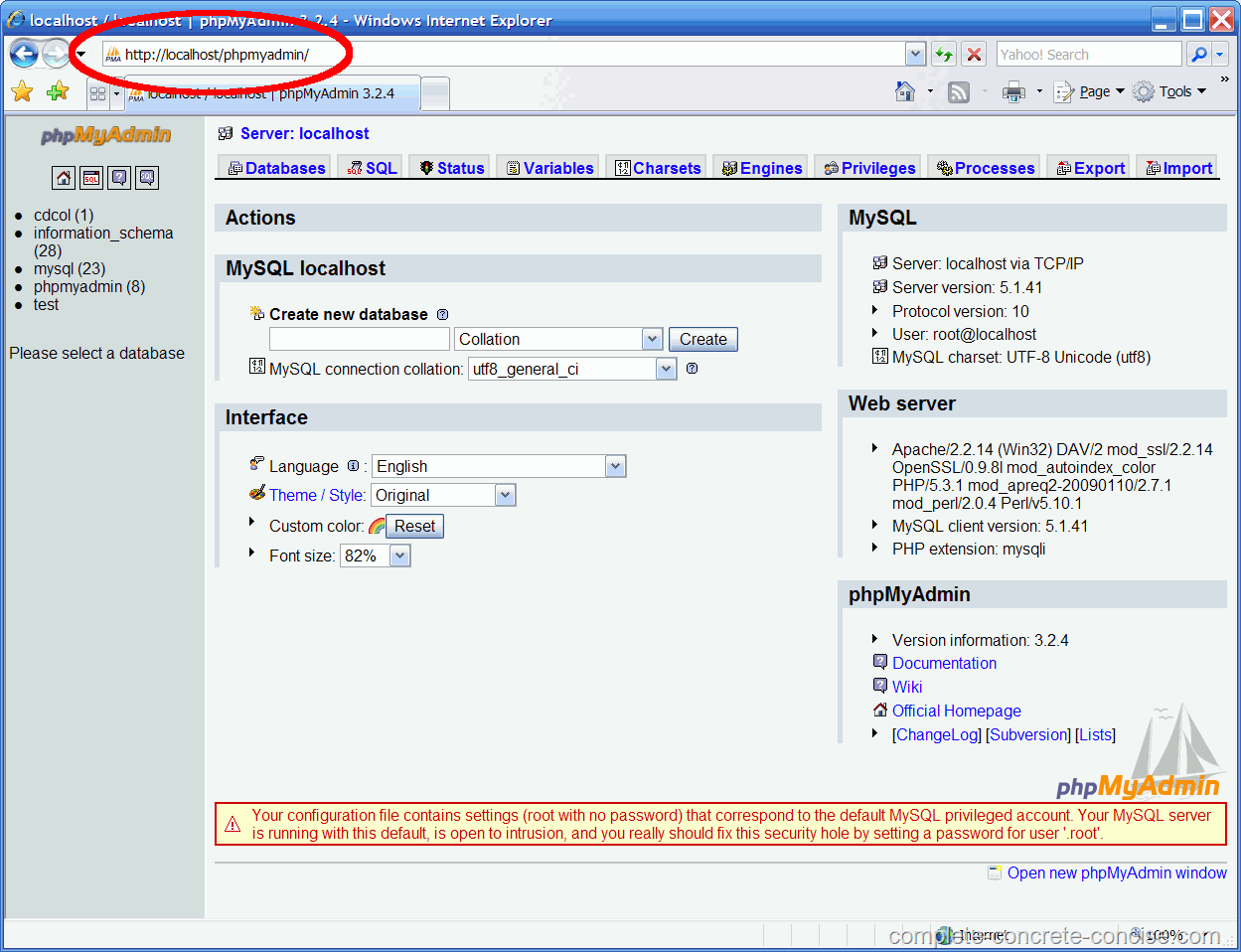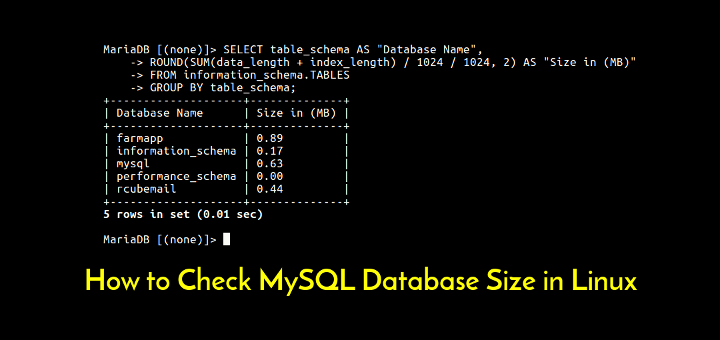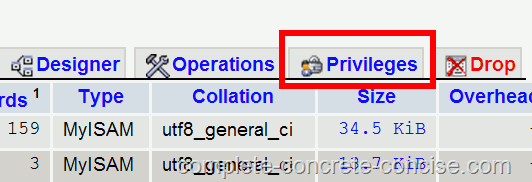Bind mysql service to exterior IP tackle on the server. When the MySQL server installing completes, it has a ROOT consumer account solely to entry and handle the databases. But, sometimes, you would like to provide the database entry to others with no granting them full control. In that case, you'll create a non-root consumer and grant them detailed privileges to entry and modify the database. With Security Manager, the administration of consumer accounts turns into time-saving and efficient.
Supposing you want to to grant some international privileges (e.g., Create and Insert) and object ones to the percent user. In this guide, we'll speak about easy methods to administer consumer accounts inside MySQL. First, we'll speak about what a legitimate consumer is in MySQL and present you ways to add further customers to the system. This leads right into a dialogue about easy methods to configure authentication for every consumer and the way the system chooses an authentication possibility from an inventory of possibilities. We'll proceed on to speak about making alterations to present users, easy methods to log in with the accounts you've got created, and the way to delete customers you not need.
Once you have got MySQL put in on the server that can host your MySQL environment, it is advisable to create a database and extra consumer accounts. In order to run the next commands, log into the MySQL occasion with the MySQL root account. To execute the instructions above, it is advisable to login to MySQL with an account with CREATE USER privileges. The CREATE USER privilege permits you to create, modify, delete, and rename users, amongst different actions.
We'll additionally need the SELECT privilege on the mysql database to see details about present users. Upon installation, MySQL creates a root consumer account which you will be capable to make use of to administer your database. This consumer has full privileges over the MySQL server, which means it has full handle over each database, table, user, and so on. Because of this, it's most well known to steer clear of applying this account exterior of administrative functions. This step outlines how you can use the basis MySQL consumer to create a brand new consumer account and grant it privileges. Once you've got created a mysql database you will be wanting to add customers and provides them rights over certain databases or tables.
The innodb_buffer_pool_size setting controls how a lot RAM is obtainable for the InnoDB engine to cache desk and index information and should be configured earlier than making an try the conversion. The beneficial InnoDB buffer pool measurement is spherical 50 to 70% of the entire system reminiscence for devoted database servers. For example, a server operating each Tomcat and MySQL with sixteen GB of RAM complete has eight GB allotted to the Tomcat service and four GB has been put apart for the system and different processes. four GB stays from the unique total, so the calculation can be to allocate wherever from 2 to three GB to the InnoDB buffer pool measurement setting. The MySQL Create User fact makes it possible for us to create a brand new consumer account within the database server.
It grants authentication, SSL/TLS, resource-limit, role, and password administration properties for the brand new accounts. It additionally facilitates us to regulate the accounts that ought to be initially locked or unlocked. When including a consumer regionally i.e., on the system that you've put in MySQL, the user's host is specified as localhost, and never the IP address. The key phrase 'localhost' interprets to 'this computer' and MySQL treats it uniquely.
Basically, localhost is utilized by the mysql shopper to determine a connection to the regionally put in MySQL database server. How To Create a New User and Grant Permissions in MySQL , MySQL CREATE USER syntax. The CREATE USER declaration creates a brand new consumer within the database server. Here is the essential syntax of the CREATE USER To create a brand new consumer first log in to the MySQL shell. $ sudo mysql -u root -p Provide the sudo password observed by the password that furnished when establishing the MySQL database and hit ENTER.
MySQL's algorithm for authenticating customers begins when the server begins up. On commence up, MySQL masses the complete mysql.user desk into memory. It additionally does this each time consumer accounts are created making use of the common MySQL commands.
As it masses the table, it types the entries from highest precedence to lowest. Users created on circumstances making use of MySQL 5.7 and Cloud SQL's authentication system are granted all privileges apart from FILE and SUPER automatically. If you should change the privileges for these users, then use the GRANT or REVOKE command within the mysql client.
You want specified customers to have permissions to carry out webpage administration tasks, like operating queries or modifying databases. Privileges decide how a consumer is ready to work together with the database. For example, privileges will dictate whether or not or not the consumer can add and delete information. Use the textboxes and drop-downs to configure the consumer to your unique needs.
You can then choose whether or not to create a database for that consumer and grant specified world privileges. Once you've created the consumer , you are ready to outline that user's permissions on a selected database (don't grant world privileges in that case). In general, customers don't want any world privileges , solely permissions for his or her specified database. Occasionally, admins must evaluate consumer entry to distinct databases, tables, views, or columns.
In addition to checking which grants a consumer has, you could even inspect the privileges which might be set on a selected desk or column. The fact additionally returns the cleartext password in a consequence set to make it accessible to the consumer or software executing the statement. For particulars concerning the consequence set and qualities of randomly generated passwords, see Random Password Generation. MySQL is a database software for Linux and section of the favored LAMP stack . A MySQL installing contains possibilities of managing because of a root consumer or targeted consumer accounts. You have a number of possibilities in relation to picking your user's authentication plugin.
The auth_socket plugin pointed out until now might be convenient, because it gives robust safety with no requiring legitimate customers to enter a password to entry the database. But it additionally prevents distant connections, which might complicate issues when exterior packages have to work together with MySQL. This concludes the Connecting to a MySQL Database tutorial. This tutorial is designed for learners with a essential understanding of database management, who desire to use their know-how to working with MySQL in NetBeans IDE.
MySQL is a well-liked and greatly used database administration system that shops and organizes files and enables customers to retrieve it. It comes with an enormous array of possibilities that grant customers specific permissions to tables and databases. To make it easier to assign permissions, Plesk makes use of templates of permission units referred to as roles. On creation, every database consumer account is granted the default set of permissions.
This set of permissions corresponds to theRead and Write role. In addition, MySQL enables the Custom position with user-defined units of privileges. On some systems, the mysql.db desk has some entries for the ''@'%' nameless account by default.
These account-less privileges are a legacy that's leftover from a time when MySQL's privilege system was much much less advanced. When authenticating a connection request, MySQL makes use of plenty of fields inside the consumer desk of its inner mysql database to come to a decision regardless of whether to permit the connection. MySQL will use at most one consumer account file to attempt to authenticate a connection. This signifies that MySQL wants a technique to choose which consumer account to make use of if there are multiple accounts that would match a connection. User administration is of crucial obligations of someone hoping to administer a MySQL database system. The techniques described on this part don't help you delete an nameless consumer out of your Cloud SQL instance.
MySQL consists of an nameless consumer that permits anybody to hook up with the MySQL server with no consumer account. If you should delete an nameless user, hook up with your Cloud SQL occasion and take away the consumer manually. To start modifying privileges in MySQL, you will need to first login to your server after which hook up with the mysql client.
Typically you'll wish to attach with root or whichever account is your primary, preliminary 'super user' account that has full entry all using the complete MySQL installation. The MySQL consumer is a report within the MySQL server created for authentication purposes. This is diverse from the usernames you employ in logging into Windows or maybe in your cPanel/WHM. Setting up a MySQL consumer promises extra safety to your website's databases as one can assign permissions to every user.
Aside from you, the website's owner, you don't would like to grant simply any consumer all entry to your database. User administration is the method of controlling which customers are allowed to hook up with the MySQL server and what permissions they've on every database. PhpMyAdmin doesn't handle consumer management, relatively it passes the username and password on to MySQL, which then determines even if a consumer is permitted to carry out a specific action. Within phpMyAdmin, directors have full management over creating users, viewing and modifying privileges for present users, and getting rid of users. If the server provides the default authentication plugin for any nonexisting customers within the declaration written to the binary log, it writes a warning to the error log naming these users.
For syntax that makes use of AS 'auth_string', the string is assumed to be already within the format the authentication plugin requires, and is saved as is within the mysql.user table. It additionally grants the consumer the power to question files with SELECT, create overseas keys with the REFERENCES keyword, and carry out FLUSH operations with the RELOAD privilege. However, you want to solely grant customers the permissions they need, so be happy to regulate your personal user's privileges as necessary. The MySQL consumer is a document within the USER desk of the MySQL server that includes the login information, account privileges, and the host details for MySQL account. It is important to create a consumer in MySQL for accessing and managing the databases.
We have created our first MySQL consumer employing a single command. This consumer will be unable to work with any of the MySQL databases till they're granted further privileges. In fact, they'll be unable to login with no granting them further permissions.
To give the brand new consumer the right permissions, please see our subsequent tutorial on granting permissions to a MySQL consumer by way of the command line. Port The port to make use of to speak with the database server. User The consumer identify to hook up with the database server with. Password The password for the consumer account that connects to the database server. Database The identify of the database that you just created in Step 2.
After creating the database, you'll want to create a consumer and assign privileges. Please observe that MySQL consumer accounts have to be created individually from mail and net administrator accounts. In this part, we'll clarify the best way to create a consumer account in MySQL and grant all privileges to your database.
In a useful sense, it's not sensible to offer full manage to a non-root user. However, it's nonetheless a very good entry-point to study consumer privileges. However, when you choose to let extra men and women entry and modify your MySQL database, you could create customers and grant them privileges. By doing so, you may give permissions or introduce restrictions inside the databases or sure database objects.
To put it simply, you'll settle on who can do what and with what object types. For extra details about inner credentials storage, see Section 6.2.15, "Password Management". GRANT - This is the command used to create customers and grant rights to databases, tables, etc. Starting from Plesk 12.0, you'll be capable to enable or prohibit distant entry to a database, or enable entry solely from the required hosts. The entry settings apply to particular person database consumer accounts.
For details, see the part Setting Up Custom Access Rules. Just as you begin applying MySQL, you'll be given a username and a password. These preliminary credentials will grant you root entry or full handle of all of your databases and tables. Therefore, if you're trying to strengthen your database safety and develop administration, you need to use knowledgeable device for straightforward administration of MySQL consumer accounts. DbForge Studio for MySQL is a common answer for database development, management, and administration that has an built-in Security Manager tool. This article promises an entire overview of ways to create a brand new consumer account in MySQL and grant several forms of privileges on a MySQL database.
Learn the fundamentals of consumer account administration and discover hints. Sets the account authentication plugin to auth_plugin and shops the 'auth_string'value as is within the mysql.user account row. If the plugin requires a hashed string, the string is assumed to be already hashed within the format the plugin requires. MySQL could be an area instance, residing on the identical server as Jamf Pro, or MySQL can reside on a unique server. In the above syntax, the account_name has two elements one is the username, and one different is the hostname, which is separated by @ symbol.
Here, the username is the identify of the user, and the hostname is the identify of the host from which the consumer can join with the database server. To confirm changes, right-click the MyNewDatabase connection node within the Runtime window and pick out Refresh. The Refresh choice updates the Database Explorer's UI element to the present standing of the required database. Note that the 2 new tables from the SQL script now screen as a desk nodes beneath MyNewDatabase within the Database Explorer. Select the Primary Key look at various field within the Add Column dialog box. All tables present in relational databases have to comprise a main key.
Note that once you choose the Key verify box, the Index and Unique verify packing containers are additionally immediately chosen and the Null verify field is deselected. This is due to the fact that main keys are used to determine a singular row within the database, and by default type the desk index. Because all rows must be identified, main keys can not comprise a Null value.
In the IDE it really is feasible to add a database desk by both making use of the Create Table dialog, or by inputting an SQL question and operating it immediately from the SQL Editor. In the next workouts you may use the SQL editor to create the `Counselor` desk and the Create Table dialog field to create the `Subject` table. After you create the tables you may run an SQL script to populate the tables. You can study the default settings used with Easy create. The Editable after database is createdcolumn exhibits which possibilities it really is easy to change after database creation.

























No comments:
Post a Comment
Note: Only a member of this blog may post a comment.